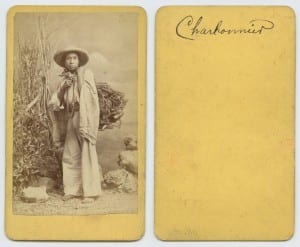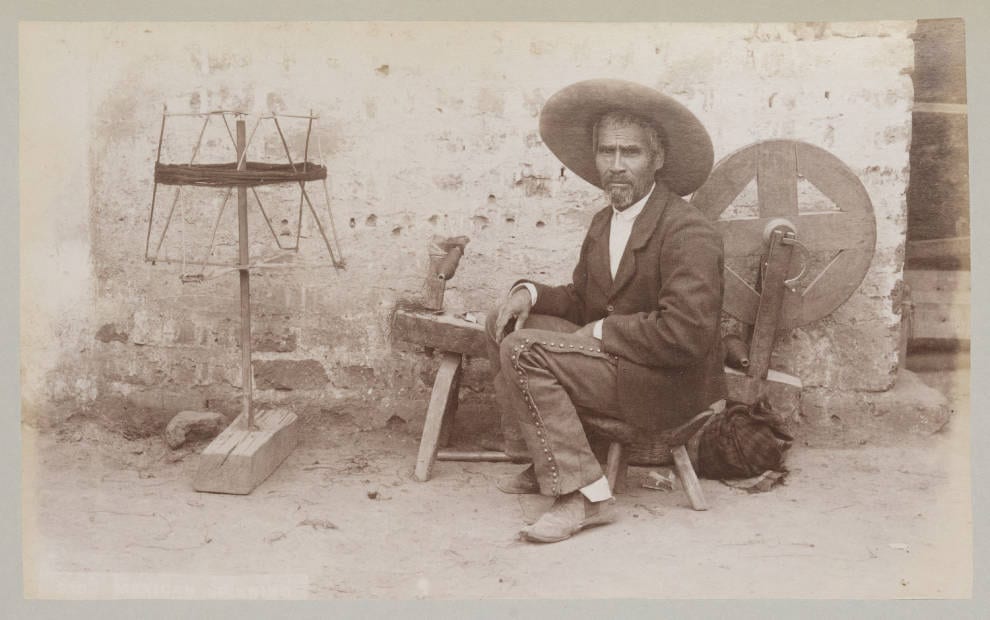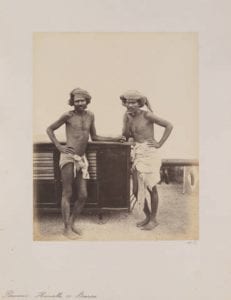In “Parwarree Hamalls, or Bearers”, William Johnson creates a photograph capturing the Westernized view of the Orient. Overall, the photo depicts Indians as very barbaric. The photo consists of two Indians in a restful standing position, leaning on what appears to be a large piece of furniture. They are both shirtless, wearing only a small piece of white cloth wrapped around their pelvis area, acting as a substitute for underwear. Johnson depicts Indian men as barbaric since their lack of clothing makes the men seem uncivilized. They are also both barefoot in an outside setting on a texturized dirt floor, implying the men are unclean, lacking the dignity to wear proper shoes and western clothing. Both men have wiry facial hair and turbans placed on their heads; however, their hair is sticking out of them in an unkempt manner. The Indian’s unkempt hair supplements Johnson’s depiction of their unclean and uncivilized nature. In terms of their stance, both men have their arm on their hip along with a bent leg. One man has a bent arm, rested on the piece of furniture. The men’s posture illustrates Johnson’s portrayal of the mean as pensive and rested, and thus lazy. This photograph is constructed through the lens of Western Perception, a euro-centric mindset that could falsely depict the Orient Culture. Because Johnson constructed this photograph, biases inevitably arise. Thus, questions are raised regarding the context of the photograph: What conditions contributed to the men’s unkempt appearance? Was this their pattern of daily life?

In “Charbonnier”, Cruces y Campa captures and portrays an indigenous workingman in Mexico. The photographed man is surrounded by a field full of grass. He is barefoot and wears overbearing course white attire. The clothing appears to be traditional clothing rather than westernized and his barefoot nature makes him appear more barbaric. All the man’s differentiating features are heightened, which contrasts them to the European population. He wears a hat, perhaps to shade himself from the sun, implying he may be outside often for his profession. He is also carrying a hefty basket noted by his slanted position, and thus is most likely a part of the working class. The man is looking straight at the camera, suggesting that the picture is staged, and not a natural depiction of the working class. Many questions are raised through this photograph about the background and portrayal of the man. What were the working members surrounding this man doing within the scene? What is not depicted in this frame? What was Cruces y Campa’s purpose for taking this photograph?


